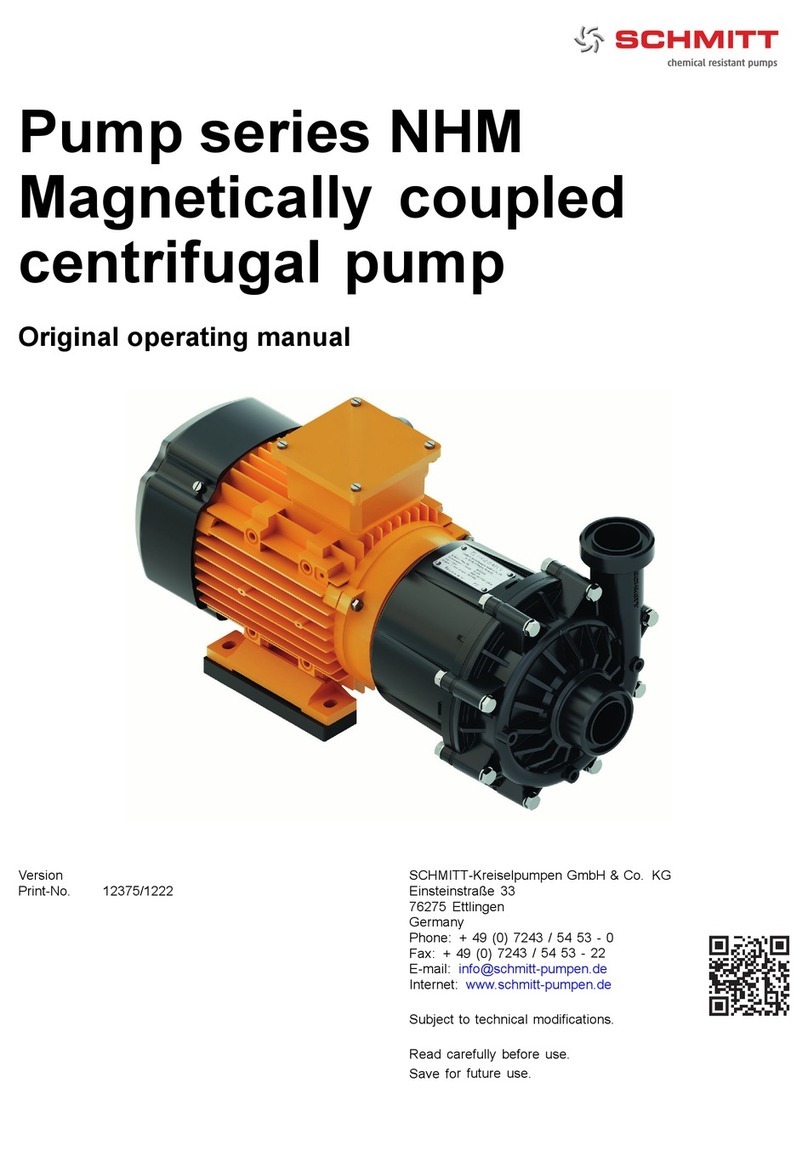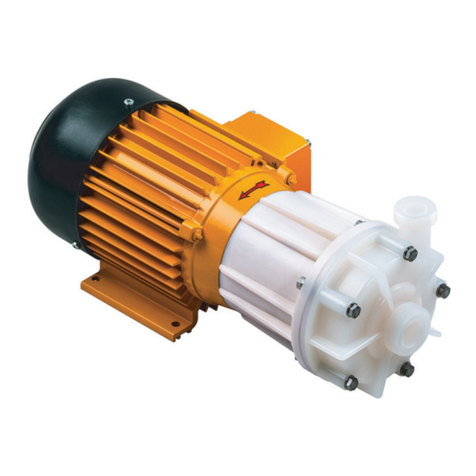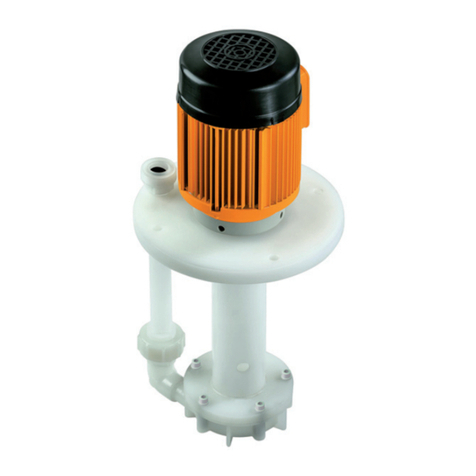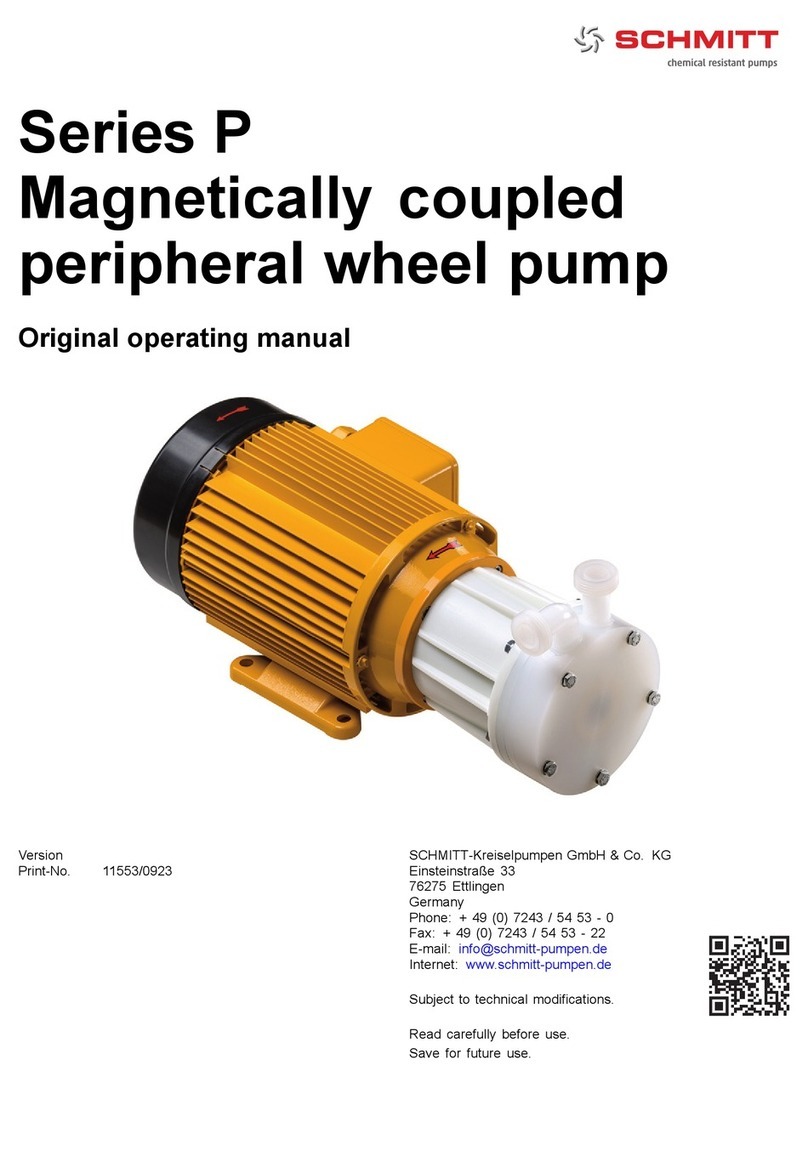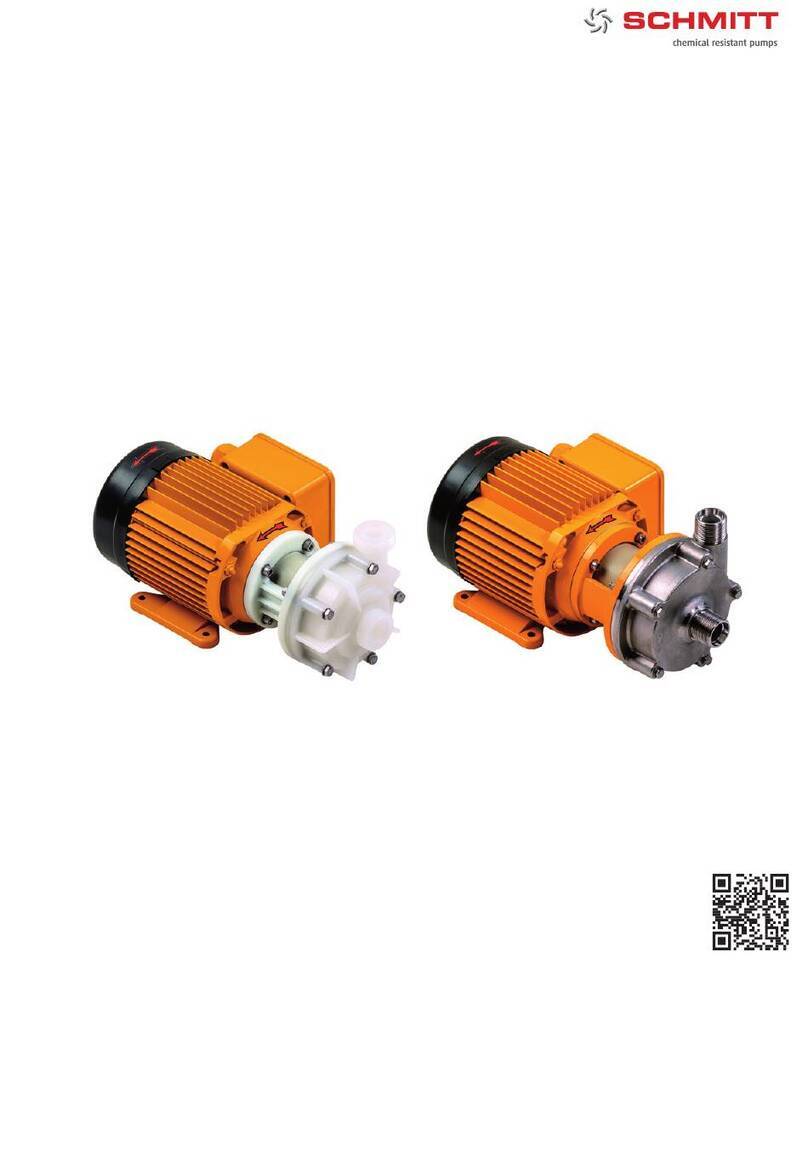
Table of contents
Table of contents
1 About this document ............................... 4
1.1 Target groups ................................. 4
1.2 Other applicable documents ................ 4
1.3 Warnings and symbols ....................... 5
2 General safety instructions ....................... 6
2.1 Intended use .................................. 6
2.2 General safety instructions .................. 6
2.2.1 Product safety ................................ 6
2.2.2 Obligations of the operating company .... . . 6
2.2.3 Obligations of personnel ..................... 7
2.3 Specific hazards .............................. 7
2.3.1 Hazardous pumped liquids .................. 7
2.3.2 Magnetic field ................................. 7
3 Layout and Function ............................... 8
3.1 Marking ....................................... 8
3.2 Description .................................... 8
3.3 Assembly ..................................... 9
3.4 Magnetic coupling ............................ 9
4 Transport, Storage and Disposal ................. 10
4.1 Transport ...................................... 10
4.1.1 Unpacking and inspection on delivery . . . . .. 10
4.1.2 Lifting .......................................... 10
4.2 Storage ....................................... 10
4.3 Disposal ....................................... 10
5 Installation and connection ....................... 11
5.1 Preparing for installation ..................... 11
5.1.1 Check operating conditions ................. 11
5.1.2 Preparing the installation site ............... 11
5.1.3 Prepare foundation and surface ............ 11
5.2 Setting up ..................................... 11
5.3 Planning pipelines ............................ 11
5.3.1 Designing pipelines .......................... 11
5.3.2 Arranging the supports and connec-
tions ........................................... 11
5.3.3 Specifying nominal widths ................... 11
5.3.4 Determine the pipe lengths and installation
parameters ................................... 12
5.3.5 Optimizing changes of cross section and
direction ....................................... 12
5.3.6 Providing safety and control devices
(recommended) .............................. 12
5.4 Connecting the pipes ........................ 12
5.4.1 Keeping the piping clean .................... 12
5.4.2 Installing suction pipe ........................ 12
5.4.3 Installing the pressure pipe .................. 12
5.4.4 Inspection for stress-free pipe
connections ................................... 12
5.5 Electrical connection ......................... 13
5.5.1 Connecting the motor ........................ 13
6Operation ............................................ 14
6.1 Preparing for commissioning ................ 14
6.1.1 Check downtimes ............................ 14
6.1.2 Filling and bleeding .......................... 14
6.1.3 Check direction of rotation ................... 14
6.2 Commissioning ............................... 14
6.2.1 Switching on .................................. 14
6.2.2 Switching off .................................. 15
6.3 Shutting down the pump ..................... 15
6.4 Restoring the pump to service .............. 15
6.5 Operating the stand-by pump ............... 16
7 Maintenance ......................................... 17
7.1 Inspections ................................... 17
7.2 Servicing ...................................... 17
7.2.1 Maintenance in accordance with maintenance
schedule ...................................... 17
7.2.2 Check the plain bearings and replace them
................................................ 18
7.2.3 Cleaning the pump ........................... 19
7.3 Dismounting .................................. 19
7.3.1 Preparations for dismounting ................ 20
7.3.2 Dismount the pump .......................... 20
7.4 Replacement parts and return .............. 20
7.5 Installing ...................................... 21
7.5.1 Preparations for installation ................. 21
7.5.2 Assembly of the pump ....................... 21
7.5.3 Install the pump into the system . . . . . . . . . . . . 22
8 Troubleshooting .................................... 23
9 Appendix ............................................. 26
9.1 Replacement parts ........................... 26
9.1.1 Part numbers and designations ... . . . . . . . . .. 26
9.1.2 Drawings ..................................... 27
9.2 Installation example .......................... 29
9.3 Technical specifications ...................... 30
9.3.1 Ambient conditions ........................... 30
9.3.2 Total pressure ................................ 30
9.3.3 Installation dimensions ...................... 30
9.3.4 Tightening torques of casing screws .... . . . . 30
9.3.5 Pump housing fill volume .................... 30
9.3.6 Suction head after 180 s ..................... 30
9.3.7 Cleaning agents .............................. 30
9.4 Maintenance schedule ....................... 31
9.5 Declaration of conformity .................... 32
2SMP 11335/0320


















